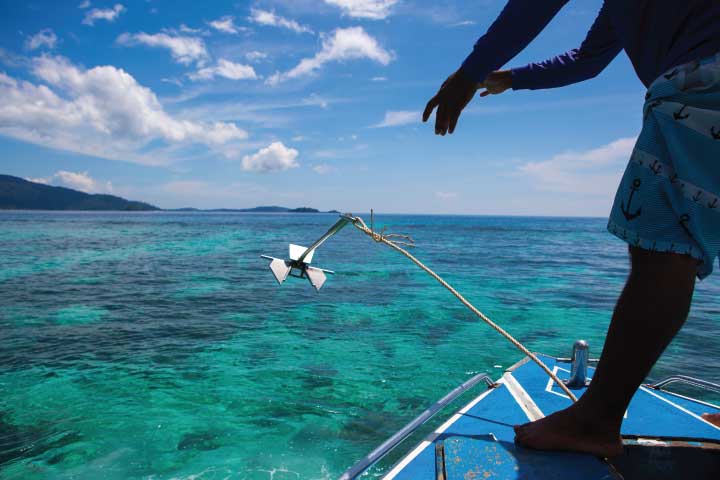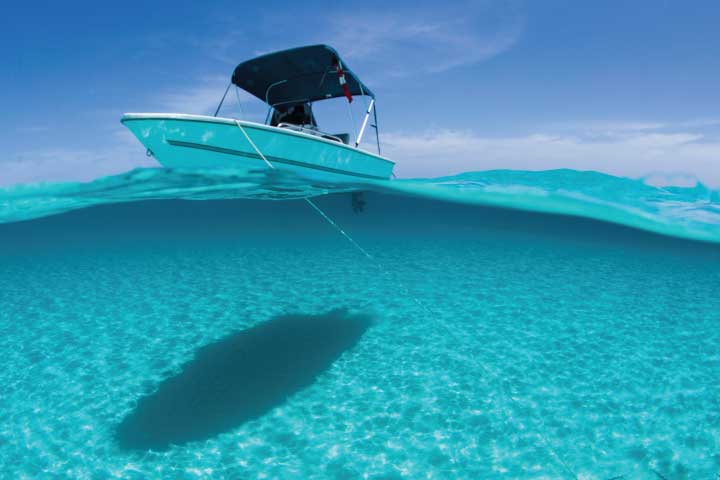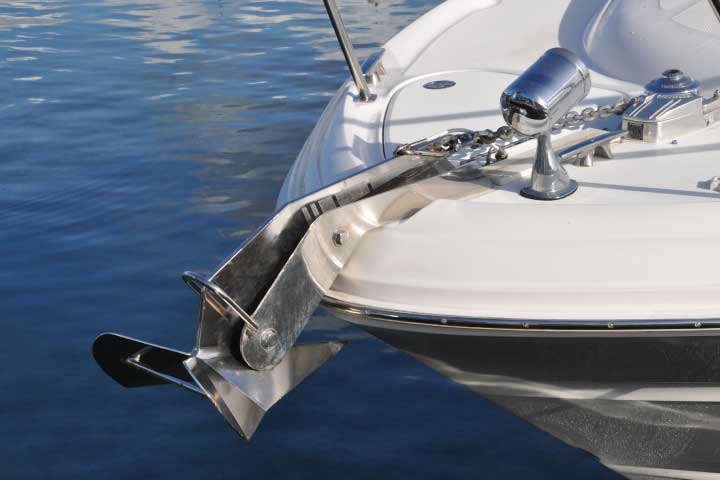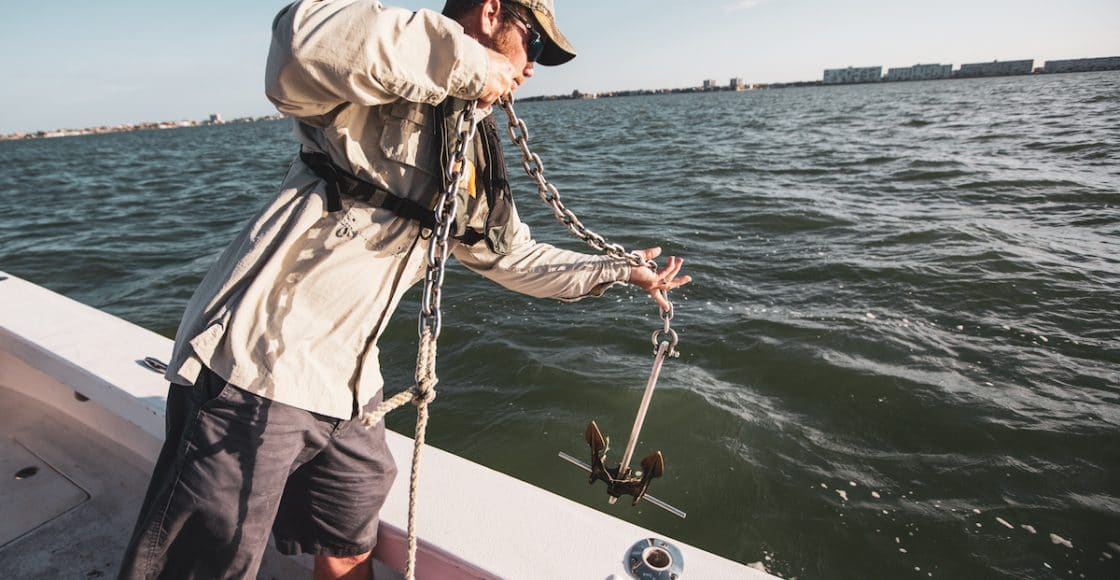How to Anchor a Boat: Step-by-Step Guide
Last Updated on January 11, 2024 by Boatsetter Team
You may most often use an anchor to hold your boat in place in a secluded cove for a few hours of swimming, but that anchor is also an essential piece of boating safety gear.
Knowing the proper technique required to set and retrieve an anchor is a basic seamanship skill. One unfortunate day, an anchor may keep your disabled boat from drifting onto a shoal or ashore, where it could be damaged.
We’ll just cover the basics here, but a good seamanship guide or course will go into much more valuable detail.
5 Steps for Anchoring a Boat
- Determine the water depth where you want to drop anchor.
- Use a scope ratio of 7:1 (seven feet of scope to one foot of water depth) to determine how much rode you need to let out.
- When you’ve let out enough scope, secure the rode to a bow cleat.
- Apply some power in reverse to set the anchor in the bottom.
- Use landmarks on shore to help you judge that the anchor is set and not dragging on the bottom.
Already Own a Boat? Earn an Average of $20K/season by Renting it Out on Boatsetter
What type of anchor should I use for my boat?

The most common anchor types are the fluke (often called a Danforth), and the plow or scoop anchor. Regardless of what type of anchor you use, always refer to anchor manufacturer guidance to determine what size anchor is appropriate for your boat’s weight and your typical sea conditions.
Fluke anchor
The fluke anchor is popular for small to medium size boats because it is lightweight and easy to handle, and it folds flat and so is easy to store in tight quarters.
The fluke offers excellent holding power in a sandy or muddy bottom but is not as effective on a rocky bottom.
Plow anchor
The plow-style anchor is typically found on heavier boats and holds well in most bottom conditions. It may also reset itself if the wind shifts.
The size and weight of the plow anchor make it best suited to boats with a bow roller and windlass.
The anchor is connected to the boat with the rode; on most family powerboats the rode includes a length of chain at the anchor end and nylon line (rope) from the chain to the boat.
Learn more by reading Boat Anchor Types: A Complete Guide.
What is the proper technique for anchoring a boat?

If possible, use the boat’s depth finder to first determine the water depth where you want to drop anchor, which will determine the required anchor scope.
- Scope is the ratio of the length of the anchor rode you will want to pay out to the depth of the water.
- A scope ratio of 7:1 (seven feet of scope to one foot of water depth) is usually recommended when there is room.
If, for example, you know the water depth is 10 feet, motor into the wind or current about 70 feet beyond the point where you want the boat to lie on anchor and drop the anchor.
Then, either let the wind or current carry you back 70 feet, or move the boat in reverse that distance if there is no wind or current.
When you’ve let out enough scope, secure the rode to a bow cleat. Then, apply some power in reverse to set the anchor in the bottom.
It’s important to stay vigilant at all times when anchored. Make sure that the anchor is set and not dragging on the bottom.
- You can sight on two landmarks on shore, or use electronics such as GPS, a chart plotter, or a depth finder to sound an alarm if the boat is moving.
- If the wind, current, or tide changes and causes the boat to swing over the anchor, it may reset itself on the bottom. If it does not, you’ll need to re-set the anchor.
Retrieving the Anchor
- To raise anchor, slowly motor towards the anchor while pulling in the rode.
- When you are directly over the anchor, it should pull free.
- If it’s stuck, first try slowly turning the boat in a large circle to change the direction of pull on the rode.
Another method is to pull up rode until the boat is directly over the anchor, and then give the line a turn around a cleat. Pull it taut as the bow dips in the bottom of a wave, and when the next wave lifts the boat, it may break the anchor free.
Pro Tip: Where to Attach the Anchor on Your Boat

On most boats, you’ll want to secure the anchor to the front, or bow, of the boat.
Never tie off an anchor to the stern of a boat. Never try to pull up a stuck anchor after securing the rode to a stern cleat. You may actually pull the stern low enough to swamp the boat—water may come over the stern and fill the boat—resulting in a very dangerous situation. If you can’t release a stuck anchor, it’s best to simply cut the line and replace the anchor.
Ready to Go Boating? Browse Available Boat Rentals Near You

Charles Plueddeman is a self-employed writer and photographer based in Wisconsin. A staff editor and contributor to Boating Magazine since 1986, he is the author of its “Off My Dock” column. In the marine realm he specializes in engine technology and trailerable boats. His editorial work has appeared in many national publications, including Popular Mechanics, Men’s Journal, Playboy, Popular Science, Cycle World, and Harley-Davidson Enthuisast.










